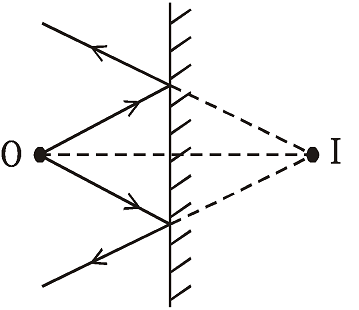

The learner is presented with the position of an object in front of a curved mirror and must decide which one of 30 images is the corresponding image. Similarly, the angle of reflection is the angle between the reflected ray and the normal at the point of incidence.Ĭoncave and convex mirrors which come under spherical mirrors are also able to produce virtual images of objects similar to a plane mirror. Name That Image (Mirror Version) The Name That Image Interactive is a skill-building tool that allows the learner to explore the characteristics of images formed by concave and convex mirrors. The angle of the incidence refers to the angle between the incident ray and the surface normal (an imaginary line perpendicular drawn to the surface). The light rays when striking a plane mirror, the angle of reflection always equals the angle of incidence. Reflection from Mirror Surface Plane MirrorĪ plane mirror refers to a mirror with a flat (planar) reflective surface. ISRO CS Syllabus for Scientist/Engineer Exam.ISRO CS Original Papers and Official Keys.Refer to ray diagrams and plane mirrors, and undertake a practical experiment using ray tracing. GATE CS Original Papers and Official Keys The angle of refraction in the air is approximately 57.DevOps Engineering - Planning to Production.Python Backend Development with Django(Live).
#Angle of reflection on a plane mirror android#

#Angle of reflection on a plane mirror full#
Full Stack Development with React & Node JS(Live).Java Programming - Beginner to Advanced.Data Structure & Algorithm-Self Paced(C++/JAVA).Data Structures & Algorithms in JavaScript.Data Structure & Algorithm Classes (Live).The light rays should obey the law of reflection for every attempt. B) The laws of reflection can be applied to the plane mirror only. AttemptĬompare the angle of incidence with the angle of reflection for each block. A) The incident ray and the normal lie on the same plane. Repeat steps 2 - 8 for several different angles of incidence.Measure the angle of incidence and angle of reflection for the mirror.Join the crosses to show the paths of the light rays. Using a pencil on the paper, mark the path of:.The aim is to see a clear ray reflected from the surface of the mirror. Move the ray box or paper to change the angle of incidence. The angle between the normal and the incident ray is called the angle of incidence.Use the ray box to shine a ray of light at the point where the normal meets the mirror.Place a plane mirror against the first line.Label this line with an ‘N’ for ‘normal’. The second law of reflection states that the incident ray, the normal and the reflected ray all lie on the same plane. Use a protractor to draw a second line at right angles to this line. The angle of reflection will also be equal to twenty five degrees because according to the laws of reflection the angle of incidence is equal to angle of reflection. Draw a straight line parallel to its longer sides. A ray of light strikes a reflective plane surface at an angle of 42 o with the surface. Images formed by a plane mirror are of same shape and size as that of an object. Place a 30 centimetre (cm) ruler near the middle of a piece of plain A3 paper. Images formed by a plane mirror are Erect/Upright.Set up a ray box, slit and lens so that a narrow ray of light is produced.To investigate the reflection of light by a plane mirror. Reflecting light experiment - plane mirror Investigation of reflection with a plane mirror Aim of the experiment


 0 kommentar(er)
0 kommentar(er)
